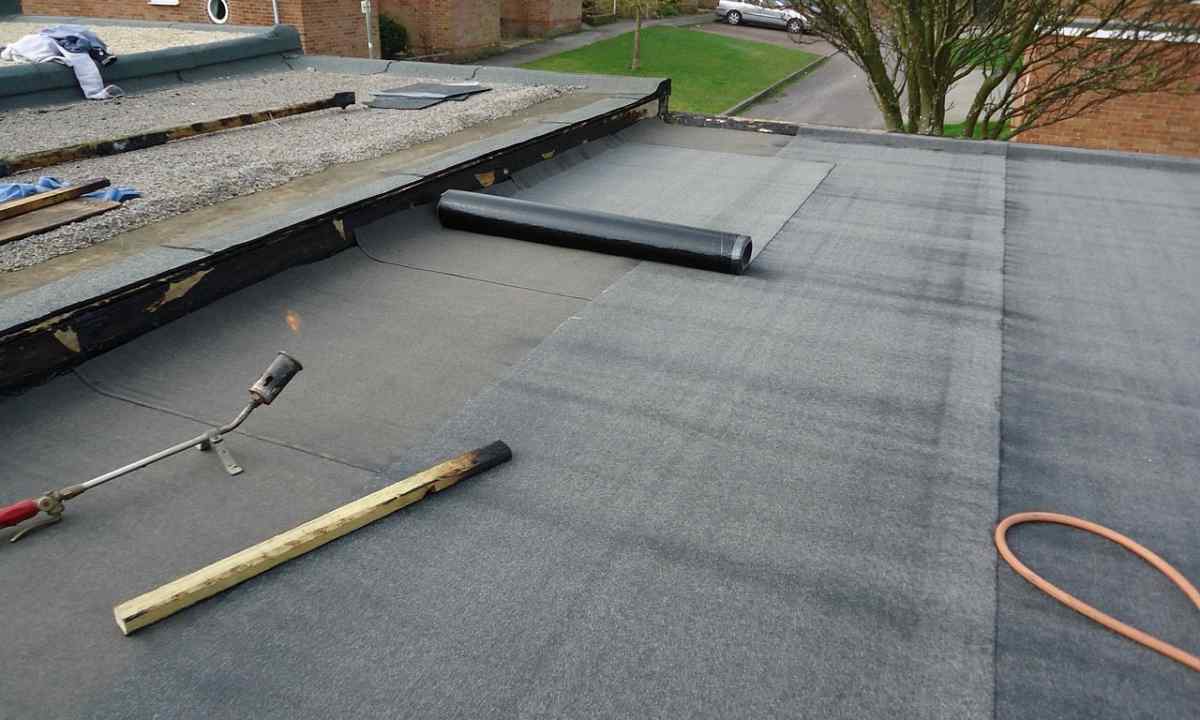When laying roof it is important to think over waterproofing question. To prevent damage of roof and emergence of leakages, the roofing tar will help to prolong covering life. She gets out depending on roofing material and can be put with own hand, without involvement of professionals.
Types of roofing tar
Roofing tar – mix of organic compounds with asbestos, cotton wool, talc, quartz and other fillers. They give to covering durability, durability and wear resistance, do it impregnable for precipitation, increase esthetic qualities. For high-quality protection of roof against fungus, moss, lichen add antibacterial components to mix. After covering the roof gains uniform color and beautiful gloss, it becomes impregnable for precipitation. Mastic is useful at primary laying or repair, with its help it is possible to process joints and seams, having improved insulating qualities of roof. Mix can be applied in 1 layer, but the multilayered covering in certain cases is required. Such "pie" will hide minor defects of design and completely will exclude leakages.
On sale several options of roofing mastics are provided:
- bituminous;
- polyurethane;
- tar;
It is necessary to select structure taking into account weather conditions, slope of roof, material of which it is made. The most widespread option – bituminous mastic. It is rather dense, uniform, flexible. The structure with addition of chalk or the fragmented peat increasing heat-insulating qualities of material will be suitable for cold regions. At the increased humidity it is better to use mix with inclusion of polymers. Materials on bituminous basis cost not much and quite are suitable for independent drawing.
When choosing mastic consider also way of its drawing. Hot mastic will be suitable for fastening of roofing material or tolite. On sale there are options for various weather conditions, they are designated by numbers on packing. During the laying of rolled material, repair and sealing of seams use cold mastic. Before drawing it is brought to the necessary standard by means of solvent.
Features of application
It is convenient to apply cold mastic with spatula. If it is dissolved with solvent, for covering of roof use wide brush. It is possible to use also jellied method when solution is applied on roof, and then is leveled by dense rollers. That mastic has not lost the qualities, for dissolution use no more than 30% of gasoline or uyayt-spiritist.
For creation of ideally smooth covering before putting liquid mastic the roof is leveled by means of bituminous primer. When processing roof it is necessary to protect respiratory organs of respirators. All types of mastic are toxic, the extra care and accuracy is required. Protective clothing, gloves, skintight glasses is necessary.
Hot mastic usually to be led up to the necessary state in industrial conditions. However it is possible to prepare it and independently, warming mix in tank with brick facing and densely closed cover. The hot mix is preparing in 2-3 hours prior to works, the structure heats up to 180 degrees, all unnecessary impurity in process are removed.

